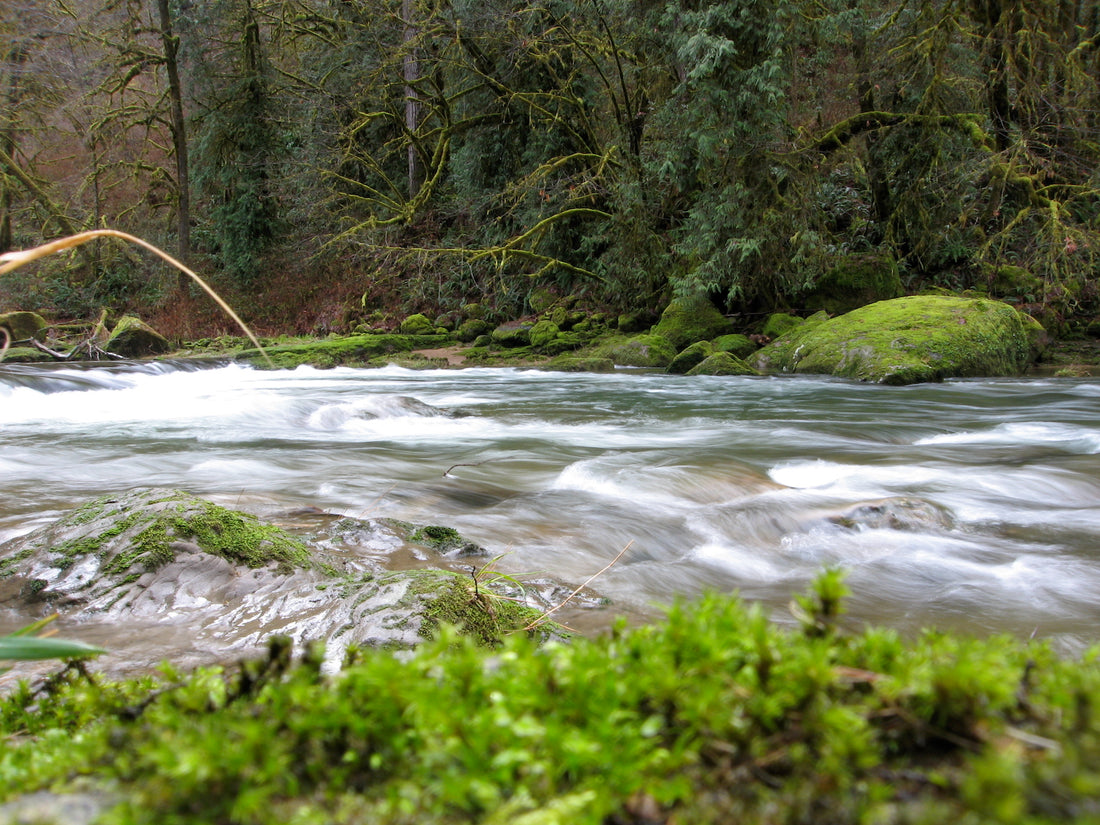Many, many years ago, when I was much thinner and more energetic, I found myself at the bottom of a deep canyon at the base of a huge rapid. At that time my preferred choice of steelhead gear was homemade spinners fished with a standard drift-fishing setup.
Back then most anglers used an 8 ½ foot casting rod equipped with a level-wind reel typically filled with an abrasion resistant 12-pound test. That’s all you needed to cover just about any bank-fishing situation for both salmon and steelhead.
My size-five spinner, although very effective at covering most of the water I’d encountered that morning, was not going to get down and fish properly in the maelstom of heavy, bouldery, fast flowing water at, and below, the base of this steep drop.

Fortunately I had an assortment of drift fishing tackle with me and was able to easily switch over. I chose a heavy slinky, leader with a Cheater (drift bobber) and had some roe with me. Standing on a precarious perch I fired a cast right in to the base of the mini-falls and free-spooled line so the sinker could get down as fast as possible.
The heavy sinker drug my presentation under the heavy water in rapid fashion.
In seconds my rod buckled over with the weight of one of the largest steelhead I’ve ever hooked. Definitely the largest steelhead I’d hook at that time. The feeling of fighting that amazing steelhead will never leave me. It stayed at the head of the pool bucking the rod in slow but heavy pulses for a long time before it even changed positions in the heavy current. If I didn’t know better I’d have guessed that I was fighting a hot 30-pound plus king.
Then the fish went completely nuts.
It never jumped, but instead ran up, down and across the pool at speeds and with power I’d never felt before. This went on for long enough to tire the giant a little, and I was able to briefly see my red Cheater in the fishes’ mouth eight feet down in the crystal-clear water. The fish was so fresh and bright I could see it against the dark and bouldery bottom.
And just like that it was over.
My hook pulled loose and I had to deal with the fact that I’d never know if that magnificent steelhead was 18 or 30 pounds.
Every steelhead angler from my generation and those before me learned how to drift fish. I’ll be the first to admit that I was one of the first American’s to switch to float fishing and have pushed the method hard since the ‘90s.

Back then most, with the exception of Canadians, steelhead anglers either fished with plugs or anchored their boat and drift fished. All bank anglers drift fished and sometimes threw spoons or spinners. That was it.
I’m going to fast forward past rigging details, advantages and disadvantages of float fishing vs. drift fishing and detail some of the times drift fishing is the best method for the conditions
Heavy Pocket Water
Sure, you can throw a float and big worm and jig rig into heavy-water pockets in a lot of situations. But many many times you won’t be able to effectively fish this type of water because the heavy current will pull your float and presentation out of the good water too fast. On top of that who knows if you are even getting your presentation to the bottom where that trophy buck is hiding.
Try dragging a bobber and bead, with a long leader, through this fast, deep bouncy water and you’ll probably be out of luck. It would be impossible to stay down with the current tugging on the float. And nevermind all the hangups.
Some river have lots of this type of water that never gets fished. Often the biggest fish of the season bury themselves in this wild water (especially moving fish) and don’t see one presentation all day, even on heavily pressured rivers.
Fish will even push into water like this if they are getting worked over all day in the traditional spots.
Drift fishing can be frustrating because you hang up a lot. I like to learn say 10 or 20 heavy pocket areas on different rivers and the bottom contour in each area. Once you know where the snags are you can effectively cover them with standard drift gear and a heavy sinker. Try to fish at a downstream angle and stay in touch with your bait/drift bobber. Sometimes you have to cast upstream. Reel fast and try to barely touch bottom. On some rivers you won’t have any competition and you might just have the day of your life.
Light Biters
Floats work well and you can cover a lot of water, but at times this technique does have some disadvantages.
If you are using a sinker and leader under your float you’ll miss some bites. A few of the spots I like to fish get pounded daily with float gear of all types. If I know fish are around I’ll drift fish with light gear and pick up the fish that anglers missed.
Just be sure to keep a direct line to your hook. In other words pull a little line in after a cast so when a fish bites really light you feel it because you have a direct connection to your hook.
- written by Nick Amato


